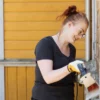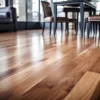A little paint can go a long way towards improving the look of your home. In fact, painting a room is one of the quickest and easiest ways to give it a makeover. While it’s not necessary to hire a professional, painting a room takes more than just paint and a brush. A little knowledge can help significantly improve the quality of your work.
Preparing Paneled Walls and Wood Trim
Fresh paint needs a porous surface to adhere to. If walls and wood aren’t properly prepared, new paint later can chip or peel. For the best results, existing paint should be removed. However, paint removal can be difficult if you are unsure how to do it.
Traditional paint stripping methods include the use of harsh chemicals or heat guns. These methods are time-consuming and can be hazardous if older layers of paint contain lead. If not properly removed, lead paint can release dust, fumes and chips that can be damaging to the health of you, your family, and your pets. The safest way to remove lead paint is with an infrared heat stripper like the Speedheater™. Speedheater™ gently warms both the paint and the wood so that paint can be removed quickly and easily with no fumes or dust.
If you don’t wish to completely remove old paint, you will need to scuff it up before painting over it. Dry sanding can release lead dust, so be sure to mist the paint with water before sanding it.
Once the surface is stripped and before painting, you will also need to patch up any holes in the walls and cover furniture and the floor with tarps. Remove all switch plates and outlet covers and place painters tape over the remaining sockets.
Paint Edges First
Use angled brushes to reach edges where your roller can’t. Angled brushes create nice, neat paint edges where two edges meet. Carefully applying the edging paint can save you hours on prep work and clean up. Apply a 2” -3” band of paint all around the top edge of the wall and where other colored surfaces meet it. Keep moving while painting, and always level out where the paint is too heavy. Keep a damp rag handy to clean off wet paint where you went over your straight band.
Painting Walls
After your edges are painted, wet your paint roller with water first then paint and use it to apply paint to the rest of the wall. Start by rolling a W or M shape then fill between the lines with vertical strokes. This ensures even coverage. Once the first coat is dry to the touch, you can paint again if necessary.
Eco-Strip offers safe and effective paint stripping with Speedheater™ products. Please contact us for more information.






